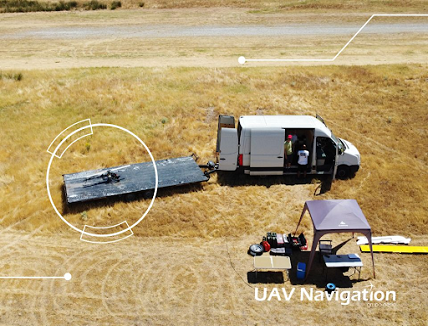
Remotely Piloted Aircraft Systems (RPAS) have already demonstrated the huge potential this technology has to enhance maritime awareness and to set-up a multi-purpose maritime surveillance operation.
Unmanned Aerial Systems (UAS) can provide great support for coast guard missions, including: maritime safety and security, fisheries control and law enforcement. In addition, an ‘eye in the sky’ provides an enhanced perspective to allow for detection of oil spills or Sulphur emissions.
Some of these use cases have meant that Uncrewed Aerial Vehicles (UAVs) are already in use by governments and agencies such as the European Maritime Safety Agency (EMSA).
UAV Navigation closely monitors the range of benefits that RPAS can have in this arena and we maintain a close relationship with organizations and technology partners which are demanding related services. One such example is that we have recently enhanced our system capability to allow for fully automatic flight deck UAV operations.
Autonomous Maritime Operations
Our autopilots can now perform a fully Autonomous Maritime Operations without any manual input through all the flight stages: take-off, flight plan execution and landing. The flight control system has been upgraded to execute such missions from vessels underway at sea or from moving platforms. This is achieved without any extra hardware or third-party devices to enhance system capabilities. Our flight controller is able to execute the entire mission, thereby reducing operator workload to a minimum.
The VECTOR range of autopilots includes referenced navigation capabilities that allow the system to follow a moving landing site in order to perform a precise automatic landing under dynamic conditions. The system is able to control a safe touchdown even in conditions as poor as Sea State 4.
UAV Navigation’s system has already been proven for maritime environments due to the fact that the hardware is qualified to MIL-STD-810F and MIL-STD-461, including a demanding salt spray test, electromagnetic compatibility tests and RF shielding tests that ensure the system will continue to perform in the ‘noisy’ environments that are typically encountered onboard large vessels.
As can be seen in the attached flight tests, the system performs a completely automatic landing onto a platform which is moving at a speed of up to 30 km/h or 16 knots, which is a typical value for the type of vessel being simulated. UAV Navigation attaches great importance to actual flight testing when introducing new features. Flight control algorithms must be fully tested when pushed to the limits by this kind of maneuver.
Once again, UAV Navigation has proved that it is at the forefront of unmanned technology evolution. On this occasion, the company has introduced a fully autonomous capability (no manual inputs at all) for landing on a moving platform.
Feel free to contact us to discuss how we can enhance your platform’s performance and to take it to the next level.


















